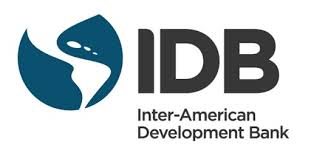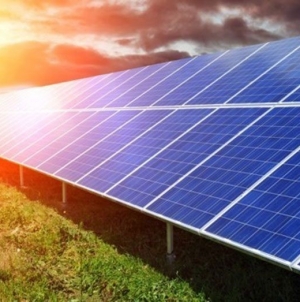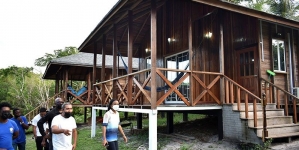Infrastructural investments needed to bounce back from COVID-19 – IDB
The Inter-American Development Bank (IDB) has urged governments around the Caribbean to invest heavily in infrastructure as means to secure economic growth, post COVID-19.
The bank in its Caribbean Quarterly Report entitled “A Pandemic Surge and Evolving Policy Responses” included detailed analysis for Guyana, Jamaica, Barbados, The Bahamas, Suriname and Trinidad and Tobago.
“A well-designed public investment programme can help stimulate the economic recovery, and several governments are already considering the options,” the report said. While it noted that fiscal space will remain an important constraint, as a nascent economic recovery emerges, additional resources could be channelled to high-productivity infrastructure products to further stimulate growth.
The IDB also pointed out that Caribbean countries are particularly well placed to benefit from increased or accelerated public investment, in part because of the region’s significant needs.
“In this context, the past decade has seen declines in public investment levels across Caribbean economies,” the report stated.
Beginning in 2014, and coinciding with large declines in global commodity prices, levels of public investment in commodity exporters – Guyana, Suriname, and Trinidad and Tobago—measured in terms of the general government’s net acquisition of nonfinancial assets relative to GDP11—saw single year contractions of over -40%, -50%, and -75%, respectively, the reported also pointed out.
In preparation for the world, post COVID-19, the IDB stated that the reprioritization of public investment should be a central objective for countries throughout the Caribbean.
“It will be important to ensure that related outlays are appropriate in terms of the prioritization of critical needs, and that projects are undertaken in a cost-effective and efficient manner,” the bank said.
Similarly, it noted that making sure that government’s financing for such projects is undertaken in a way that minimizes risks to the public balance sheet, will be important to ensure that the benefits of public investment outweigh the costs.
Pointing specifically to Guyana, the IDB stated that the country’s projected non-oil growth is expected to fall by four percent at the end of 2020.
It was the International Monetary Fund (IMF) which had revised Guyana’s Gross Domestic Product (GDP) growth estimate down twice, first from 85.6 percent to 52.8 percent and now to 26.2 percent.
In spite of that revision, the bank stated that it is still a remarkable growth figure and “the only positive one among the 26 Latin American and Caribbean countries.”
In the medium term, the IDB said, Guyana’s GDP growth is expected to average 14.9 percent over 2020–2025. But while oil production is driving these growth figures, “authorities estimate that non-oil GDP contracted by 4.9 percent in the first half of 2020 and is projected to fall between 1.4 and 4.3 percent in the full year.”
The pandemic has had varied outcomes on different sectors of the non-oil economy. The IDB noted that the largest productive sector of the economy, agriculture (which accounts for 17.6 percent of GDP), suffered a contraction of 4.1 percent in the first half of 2020. Rice production, however, is expected to expand by around three percent in 2020, which would contribute to mitigating the contraction in the agriculture sector.
On a more positive note, Guyana’s second largest sector, the mining industry, with 14.9 percent of GDP (and which now includes oil production), expanded by 343.7 percent in the first semester, after oil production began in December 2019. Gold production, representing almost 10 percent of GDP, grew by 2.1 percent in the first half of the year, bolstered by historically high prices of gold, the bank said in its report.
Further, it said the services sector, which makes up 45 percent of the economy, is potentially the most exposed sector to social distancing policies. This sector declined by 3.8 percent the first half of the year, with wholesale and retail trade falling by 14.7 percent, transportation and storage by 25 percent, and accommodations and food services by 32.9 percent. Also added to this was the construction sector, which had been growing at relatively high rates prior to the pandemic, fell by 5.6 percent.






















